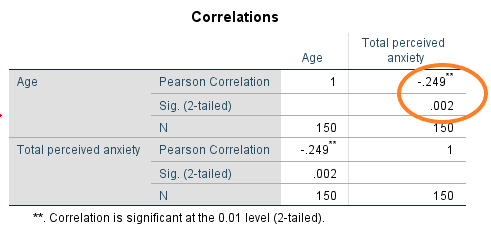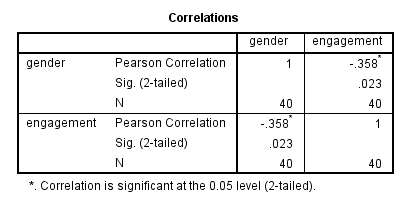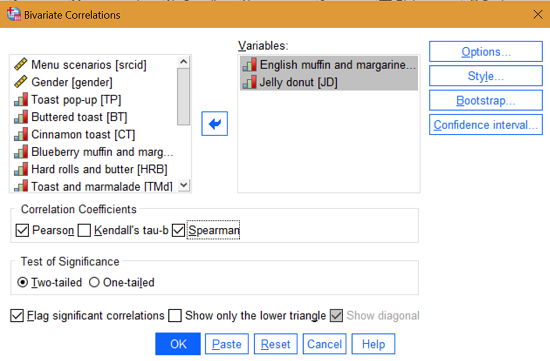


Where two variables have been picked for plotting. This gives: SPSS screenshot © International Business Machines Corporation. Pick Graphs → Legacy dialogs → Scatter/Dot to get: SPSS screenshot © International Business Machines Corporation. First, a simple scatterplot of two variables. Then hit the big green triangle (“run”) to get: SPSS screenshot © International Business Machines Corporation. In the /VARIABLES line, add the word “with” between academic and general as shown: SPSS screenshot © International Business Machines Corporation. To get the associated partial correlation matrix, open the Analyze → Correlate → Bivariate dialog again, move all the variables over (if they are not already there) and hit Paste instead of OK. For example here we may want to lump the variables academic common friend and intimate together and see what their correlations are with the general variable. Sometimes you will not be interested in the complete correlation matrix but only in the correlations of one group of variables with another group. The -values themselves are also given in the SPSS output. SPSS puts ** by values that have and a * by those correlations with. This significance is determined using the statistic given in Section 14.2. Other thing to notice in the SPSS output is the significance of the correlation coefficients. The correlation matrix is at the heart of multivariate statistics in a way that standard deviation is at the heart of univariate statistics. We’ll be introduced to matrices more systematically in Chapter 17.

The matrix is also symmetric which means that the numbers above the ones are the same as the ones directly across below the ones - the correlation between and is the same as the correlation between and. Note that the correlation matrix has ones on the diagonal - a variable is perfectly correlated with itself. Specifically, the correlation matrix for these four variables, looking at the SPSS output is: This result, when you just look at the Pearson correlation coefficients, is a correlation matrix. In the menu that pops up, move all the variables over: SPSS screenshot © International Business Machines Corporation.Īnd hit OK to get the following output: SPSS screenshot © International Business Machines Corporation. Open “Hypertension.sav” from the Data Sets and pick Analyze → Correlate → Bivariate: SPSS screenshot © International Business Machines Corporation. 14.3 SPSS Lesson 10: Scatterplots and Correlation


 0 kommentar(er)
0 kommentar(er)
